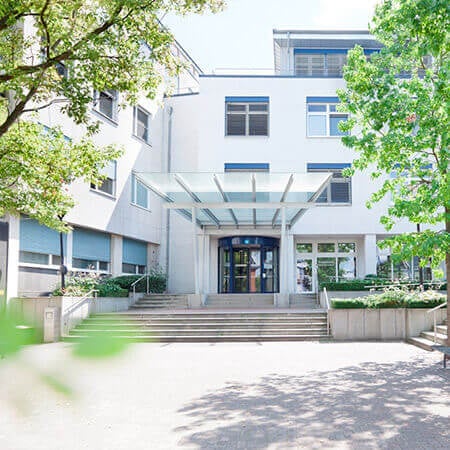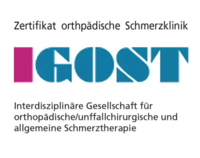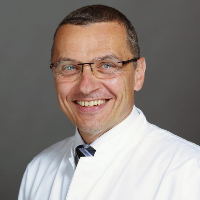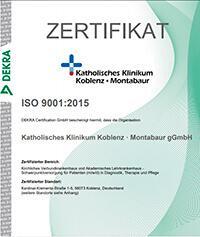Hip Osteoarthritis (coxarthrosis) — Hip Replacement and Rehabilitation: treatment in the Best Hospitals of Germany
Treatment prices are regulated by national law of the corresponding countries, but can also include additional hospital coefficients. In order to receive the individual cost calculation, please send us the request and medical records.
Treatment of Hip Osteoarthritis (Coxarthrosis) in Germany
- Diagnostics
- Hip replacement
- Arthroscopic surgery
- Diagnosis and conservative treatment
- Endoprosthesis replacement in coxarthrosis
- Endoprosthesis replacement in coxarthrosis with rehabilitation
- Treatment with autologous conditioned plasma (ACP)
- Bilateral hip replacement
- Bilateral hip replacement and rehabilitation
- Autologous chondrocyte implantation (ACI)
- Orthopedic rehabilitation

Department of Adult and Pediatric Orthopedics, Traumatology
The Department of Adult and Pediatric Orthopedics, Traumatology is part of the specialized Center for Musculoskeletal Disorders, whose medical team consists of highly qualified orthopedists, traumatologists, and spinal surgeons. The department offers modern diagnostics and treatment of the entire range of musculoskeletal diseases. The department's field of competence includes the treatment of injuries of varying severity. The therapeutic options cover both conservative measures and surgical interventions, which are mainly performed using sparing minimally invasive techniques. The treatment concept is based on the comprehensive approach – from the use of conservative methods to physiotherapeutic procedures the day after surgery.






Department of Adult and Pediatric Orthopedics, Traumatology, Foot Surgery
According to the prestigious Focus magazine, the Department of Adult and Pediatric Orthopedics, Traumatology, Foot Surgery ranks among the top German medical facilities specializing in hip surgery! The department offers the full range of high-precision diagnostics and conservative and surgical treatment for diseases of bones, joints, muscles, ligaments, and tendons. One of the department's key areas of clinical practice is large joint arthroplasty. In this area, the department is awarded the prestigious endoCert certificate. The doctors in the department's operating rooms successfully perform knee, hip, and shoulder replacement surgery. Whenever possible, preference is given to minimally invasive joint replacement surgery. An important part of the work of the department's doctors is the treatment of orthopedic diseases and musculoskeletal injuries in children. The specialists at the medical facility also have long experience in helping patients with foot pathologies and deformities, including hallux valgus, hallux rigidus, hammer toes and claw toes, metatarsalgia, etc. The department's doctors have in their arsenal state-of-the-art equipment and modern treatment methods that allow for the achievement of excellent therapeutic results. More than 3,500 inpatients and about 17,000 outpatients are treated at the medical facility every year.




Department of Orthopedics, Traumatology, Spinal Surgery and Foot Surgery
According to the Focus magazine, the Department of Orthopedics, Traumatology, Spinal Surgery and Foot Surgery ranks among the top German medical facilities in treating orthopedic diseases and spinal surgery! The department carries out comprehensive examinations and effectively treats musculoskeletal diseases and injuries. The department has about 130 beds for its patient hospitalization. Doctors annually admit more than 4,000 patients for inpatient treatment. Several thousand surgical interventions of varying complexity are performed on the basis of the medical facility annually. The department offers the services of the certified Maximum Care Joint Replacement Surgery Center (EPZmax) and the certified Trauma Center. In addition, the department's specialists have vast experience in treating spinal and foot pathologies. The main goal of the department's doctors is to restore mobility and eliminate pain. The specialists always prefer an individual approach to each patient and his clinical case.






In case of coxarthrosis, total joint replacement is the only method that can cure this disease once and for all. In Germany, these operations are safe and effective. After replacement surgery, a person completely gets rid of pain and can lead an active lifestyle. On our website, you can find out the cost of treatment in different German hospitals and book a medical care program at an affordable price.
Content
- Who may need replacement surgery?
- Types of replacement surgery
- How is the surgery performed?
- Is the preparation for surgery required?
- Who may need rehabilitation?
- How long does rehabilitation last?
- Early phase of rehabilitation
- Late phase of rehabilitation
- Benefits of replacement surgery in Germany
- Treatment in Germany with Booking Health
Who may need replacement surgery?
Hip replacement is the most common surgery in orthopedics. In turn, coxarthrosis is the most common indication for replacement surgery. It is a very common disease: the signs of the hip joint lesions are detected in most older people. The joint simply wears out with age.
The surgery is not immediately performed for all patients. There are conservative treatment methods, which although do not cure arthrosis, but help control its symptoms for some time. Lifestyle adjustment allows the person to slow down the progression of pathology.
However, the joint finally degrades sooner or later. In this case, the mobility of the hip joint is impaired, the person limps and has to use a cane. The pain becomes constant and unbearable. It can be poorly controlled with painkillers. In these cases, the doctors resort to joint replacement surgery.
Cost of hip replacement surgery in hip coxarthrosis is from €11,783. You can find prices for other treatment options and hip rehabilitation on the Booking Health website.
The best hospitals for the treatment of hip osteoarthritis in Germany are:
- University Hospital Rechts der Isar Munich
- University Hospital of Ludwig Maximilian University of Munich
- University Hospital Ulm
- University Hospital Frankfurt-am-Main
- Vitos Orthopedic Clinic Kassel
Types of replacement surgery
Hip replacement can be total or partial (subtotal). With subtotal replacement, only the femoral component of the endoprosthesis is replaced. With total, which is usually carried out for coxarthrosis, the replacement of the acetabular (pelvic) component is also required.
The type of fixation of the endoprosthesis can be cement or cementless. For coxarthrosis, a cementless method is usually used. The components of the artificial joint are fixed with screws. Then they are gradually fused with the patient's own bone tissue. Nevertheless, the doctors resort to the cement method of fixing the prosthesis in case of concomitant osteoporosis.
According to the number of surgical interventions performed, replacement surgery can be primary and revision. The primary surgery is when the patient's own joint is removed and an artificial one is implanted instead. The revision surgery is when the patient with a previously implanted prosthesis is operated on. The doctors can replace either one or two of its components. The most common reason for revision operation is aseptic loosening of the endoprosthesis.
How is the surgery performed?
The surgery is performed under general or spinal anesthesia. The last one is often combined with sedation – the patient is administered the drugs that cause drowsiness.
In the standard version, the operation lasts no more than 1-2 hours, but in complex cases, it can last longer.
When performing surgery, the doctor resects the patient's bone tissue. In fact, the old joint is completely removed, and a new one (an artificial joint) is implanted in its place.
Upon the completion of all manipulations, the surgeon sutures the wound. Drainages are left in the wound to drain fluid so that it does not accumulate in the tissues.
Is the preparation for surgery required?
It is advisable to prepare for the operation in advance. It is worth quitting smoking, losing weight in case of excess one, and training the muscles of the upper body.
Smoking worsens the surgery outcome. It is worth giving up this habit at least a month prior to the upcoming intervention. There are two main problems caused by smoking: impaired microcirculation and weak immunity. As a result, the risk of infectious complications increases, and wounds heal more slowly.
Excess weight is the main cause of coxarthrosis. It increases the load on the hip joint – both on the patient's own and on the artificial one. Ideally, the body mass index should be no more than 30. It is highly desirable that it should not exceed 35, and if it is over 40, the surgery may be refused.
Immediately before surgery, the patient has to undergo several tests. The surgery is performed on an empty stomach for at least 12 hours of fasting.
Who may need rehabilitation?
All patients after replacement surgery need rehabilitation. It begins in the hospital, in the first hours after the hip replacement. The rehabilitation continues for several months. The full load on the operated leg is allowed after 2 months if the cementless method of fixation was used, and after 1 month if the artificial joint was fixed with cement.
Orthopedic rehabilitation is aimed at restoring the musculoskeletal functions. In some diseases, it can be only partial, but after total hip replacement, all functions can be expected to recover completely. The patient will be able to make any movements, lead an active lifestyle, and get rid of pain. He no longer has to use a cane when walking.
Why it is worth undergoing orthopedic rehabilitation:
- Muscle atrophy is prevented, its volume can be restored faster.
- Mobility of the hip joint improves.
- Bone mineralization improves under load.
- Risk of aseptic loosening of the endoprosthesis reduces – the most common cause of revision surgery for hip replacement.
- Service life of the prosthesis is increased.
The patients with osteoporosis and reduced physical activity particularly need rehabilitation prior to surgery. They most often suffer endoprosthetic loosening and have repeated surgical interventions. Osteoporosis causes bone mineralization deterioration. In women, this occurs after 45 years, in men – after 65 years. As a result, the risk of periprosthetic fractures and bone resorption increases.
How long does rehabilitation last?
The rehabilitation begins at the hospital, where the patient spends 2 weeks on average. Then he works out at home or in a rehabilitation center. The full recovery takes up to six months, but the most complex stage lasts about 3 months. After this period, the patient is usually mobile and can do physical exercises at home.
The rehabilitation phases include:
- The early phase is the first two weeks after surgery. During this period, the tissues are still inflamed, so rehabilitation measures are minimal. The patient performs the exercises while lying in bed or standing with support. The movements should be smooth and sparing. From the second week onward, the wound heals. The main task of training and physiotherapy during this period is to improve blood circulation, eliminate edema, avoid blood stagnation and create good conditions for tissue regeneration.
- The late phase covers the period up to 3-4 months. It is divided into three stages. The first stage lasts up to 6 weeks. During this period, bone remodeling occurs. The patient can already load the operated leg. At first, he carries no more than 15% of the maximum load, but by the end of the third week the load reaches 50%, and is gradually brought to full.
- After about 2.5 months, dense tissues are renewed. They become more durable. A person can already walk without support on crutches. The intensity of the training increases. They are aimed at strengthening the muscles of the thigh – the mobility of the artificial joint depends on them.
- After 4 months, the bone tissue is completely restored. Further rehabilitation is possible at the request of the patient. For older people, self-care is usually sufficient. Young people continue their rehabilitation further, as they want to achieve the best indicators of strength, coordination and motor skills, which are necessary for physical work and active life.
Early phase of rehabilitation
The rehabilitation begins within a few hours after surgery. The earlier the patient is activated, the lower the risk of complications. If the operation was performed under general anesthesia, the patient usually gets out of bed the next day. If it was done under spinal anesthesia, then a person can get up already on the first day.
In any case, even before getting out of bed, the patient can do the exercises while lying on the bed. He gets up for the first time with the help of the medical staff, but then learns to walk on his own. With the help of crutches or walkers, he can move tens or even hundreds of meters.
The leg should be in the abduction position. A roller is placed between the patient's legs. He should sleep only on his back. Turning over, he should squeeze the roller between his legs.
The main task of the early stage of rehabilitation is to create good conditions for wound healing and to avoid the development of complications. For this purpose, not only exercises are used, but also drugs. The patient receives painkillers so that severe pain does not impede the build-up of activity. Antibiotics are used to prevent infections, as well as elastic bandaging of the legs and injections of direct anticoagulants are used to reduce the risk of thromboembolism.
After 1-2 days, the doctor removes the drains. The first dressing is usually performed on the second day. Then the dressing is done every 2-3 days. The sutures are removed after 2 weeks. Sometimes it is not necessary to remove them – the threads dissolve on their own.
On average, a person stays in the hospital for 2 weeks, but some German hospitals use the fast-track rehabilitation protocol. Its principles are:
- Training begins even prior to the operation, so that the patient can walk with crutches, sit down, lie down and get up correctly, as well as take care of himself after it.
- Operation is performed under spinal anesthesia so that the patient can be activated earlier.
- Person gets out of bed within 2-6 hours after replacement surgery.
- Infiltration anesthesia is used in combination with compression stockings to relieve pain.
- Duration of hospital stay is minimal – it is reduced to 5-10 days, and sometimes even to 3-4 days.
The patients are discharged from the hospital as soon as they restore their self-care ability and can walk at least 70 meters without someone's assistance.
Late phase of rehabilitation
After 2-3 weeks, the patient can begin to recover in the rehabilitation center. The intensity of rehabilitation measures increases. The most important and the most dynamic period when maximum progress is achieved is the second month of rehabilitation.
German hospitals for rehabilitation have everything you need: gyms, simulators, swimming pools, robotic systems. The doctors analyze information about the patient's physical condition and plan an individual amount of load to achieve the best possible result. The specialists from different medical fields take part in the rehabilitation process: rehabilitation therapists, physiotherapy specialists, psychologists, physiotherapists. The patient acquires correct walking patterns, strengthens muscles and achieves maximum mobility of the operated limb.
Benefits of replacement surgery in Germany
Hip replacement surgery is the most common orthopedic intervention. In Germany, doctors perform tens of thousands of these operations every year. They are carried out in other countries of the world, including in countries with a low level of medicine, but still, a huge number of residents of these countries prefer to undergo treatment and rehabilitation in Germany. This country offers the highest level of medicine, the use of the very latest technologies, and the world's best doctors who restore the health of patients.
Here are several reasons why it is worth having replacement surgery and rehabilitation in Germany:
- Vast experience: major departments of orthopedics perform thousands of replacement surgeries on large joints every year.
- Accurate diagnostics allows the doctors to ideally plan the surgical intervention and select the best combinations of components of the artificial joint.
- The use of the advanced types of prostheses that will serve for decades.
- In 90% of cases, the endoprosthesis implanted in Germany serves for a lifetime. Only one out of ten patients will need revision surgery in the future.
- In the best German medical clinics, the efficiency of surgery reaches 98%, while the world average is about 90%.
- Successful replacement is possible even in the most complex cases: if it is the second operation, the patient has osteoporosis, bone deficiency or significant acetabular deformities.
- Whenever required, the components of the endoprosthesis are printed on a 3D printer: they are made individually, for a particular patient.
- Affordable cost of treatment: the level of medicine in Germany is the same as in Japan, developed countries of North America and Europe, but the prices are lower.
- The use of fast-track rehabilitation protocols, which not only shortens the hospital stay, but also reduces the risk of complications.
- Well-equipped rehabilitation centers where the patient can fully recover from surgery.
Treatment in Germany with Booking Health
To undergo hip replacement surgery in one of the best German hospitals, please use the Booking Health services. On our website, you can find information about the cost of treatment in different German hospitals, compare prices and book a medical care program at an affordable price.
Please contact the Booking Health specialists to undergo treatment in Germany. Here are our benefits for you:
- We will choose the best hospitals for hip replacement whose doctors have vast experience in performing hip replacement surgery.
- We will help you overcome the language barrier, establish communication with the German medical center and your attending physician.
- We will reduce the waiting time for the medical care program and book a doctor's appointment on the most suitable dates.
- We will reduce the price. The cost of treatment in Germany will be decreased due to the lack of additional coefficients for foreign patients.
- We will take care of all organizational issues: documents for entering the country, transfer from the airport, hotel, interpreter, etc.
- We will prepare a medical care program and translate medical documents into German. You do not have to undergo previously performed diagnostic procedures.
- We will provide communication with the hospital after the completion of treatment in Germany.
- We will organize additional medical examinations, treatment in Germany or rehabilitation, if necessary.
- We will buy medicines in Germany and forward them to your native country.
- We will help you keep in touch with the hospital after treatment in Germany.
Booking Health makes treatment in Germany easier, faster and cheaper. We will fully organize your trip, and you will only have to focus on restoring your health.
Authors:
This article was edited by medical experts, board-certified doctors Dr. Nadezhda Ivanisova, and Dr. Bohdan Mykhalniuk. For the treatment of the conditions referred to in the article, you must consult a doctor; the information in the article is not intended for self-medication!
Our editorial policy, which details our commitment to accuracy and transparency, is available here. Click this link to review our policies.

